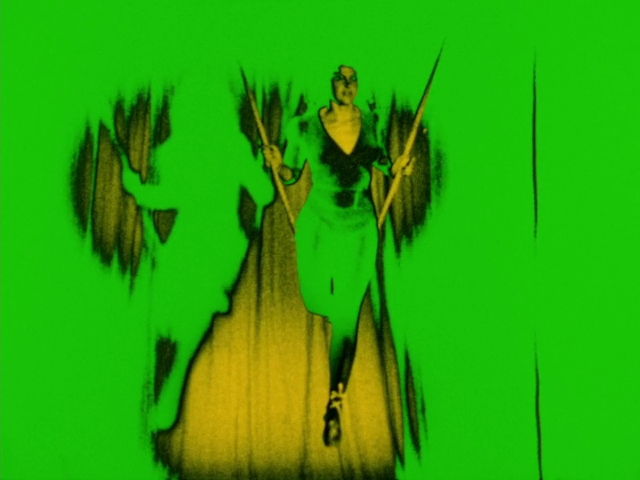
In this avant-garde classic, protagonist Louise deals with a change in her lifestyle in which she must learn to negotiate domestic life and motherhood.
EN
“Contemporary film theory sees a convergence of cinema, psychoanalysis, and history. This intersection takes place upon the scene of representation. Viewed as modes of discursive structure, all three may be thought of as fictional spaces/places, calling into question what had formerly been perceived unproblematically as cinematic veracity, psychoanalytic truth, and historical origin. We see the two films by Laura Mulvey and Peter Wollen, Penthesilea (1974) and Riddles of the Sphinx (1977), as attempts to address the issues at this conjuncture.”
[…]
Jacquelyn Suter and Sandy Flitterman: We would like to begin with an issue that is recurring frequently now in cinematic discussion – the place of memory and repressed history. A certain area of theoretical work is attempting to situate both feminist and/or class politics within a constitution of history seen as a discourse and the function of memory as a psychoanalytic analogue in that discourse. Since both Penthesilea and Riddles of the Sphinx are informed a great deal by myth as past history and its relation to the present historical moment, it seems that you are trying to recapture for women an aspect of their history that has been lost or repressed. How do you see the relation of memory and history as discourse in your films?
Laura Mulvey: I think that Penthesilea and Riddles have different approaches to that question, especially so far as women’s discourse is concerned. But, leaving that on one side for a moment, let’s go back to the cultural climate early on in the women’s movement, and the way that questions about whether women had a history or not were considered then. We wanted to rediscover the past, to create a tradition of some kind, as a political project. But it wasn’t that straightforward. There were different levels corresponding, perhaps, to desire on the one hand and factual research on the other. There was the search for a mythic time/place, a before-the-beginning, a time when women weren’t oppressed. There’s that side to it. Then, whether women under patriarchal culture had a suppressed history and culture, which had been simply ignored and despised by official history and culture. It is here, for instance, that interest in letters, diaries, conversations and domestic creativity comes in – feminine sub-culture.
[…]
Perhaps what I’m really trying to get at is if you’re engaged in cultural struggle, out of oppression, where cultural marginality has been one hallmark of that oppression, and the language of high culture seems riddled with male domination, how can you – given all this – speak? How can you expect a new form of discourse to come to you at the exact point when it’s needed? Do you try to adapt the language of patriarchal culture? Do you try to draw on sub-cultural traditions that to exist even on a small scale? Or, of course, you can also look to other existing areas of counter-cultural opposition, which would lead to interest in other kinds of questioning and which is the basis for feminist aesthetic interest in and “alliance” with the avant-garde. Why not take bricks from an area of discourse which already challenges patriarchal culture?
Jacquelyn Suter and Sandy Flitterman in conversation with Laura Mulvey1
“It is helpful to understand what the cinema has been, how its magic has worked in the past, while attempting a theory and a practice which will challenge this cinema of the past. Psychoanalytic theory is thus appropriated here as a political weapon, demonstrating the way the unconscious of patriarchal society has structured film form. The paradox of phallocentrism in all its manifestations is that it depends on the image of the castrated women to give order and meaning to its world. An idea of woman stands as linchpin to the system: it is her lack that produces the phallus as a symbolic presence, it is her desire to make good the lack that the phallus signifies. […] Woman then stands in patriarchal culture as a signifier for the male other, bound by a symbolic order in which man can live out his fantasies and obsessions through linguistic command by imposing them on the silent image of woman still tied to her place as bearer, not maker, of meaning.
[…]
The magic of the Hollywood style at its best (and of all the cinema which fell within its sphere of influence) arose, not exclusively, but in one important aspect, from its skilled and satisfying manipulation of visual pleasure. Unchallenged, mainstream film coded the erotic into the language of the dominant patriarchal order. In the highly developed Hollywood cinema it was only through these codes that the alienated subject, torn in his imaginary memory by a sense of loss, by the terror of potential lack in fantasy, came near to finding a glimpse of satisfaction: through its formal beauty and its play on his own formative obsessions.”
Laura Mulvey2

